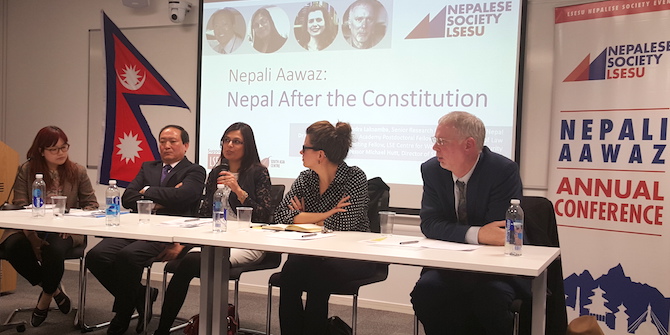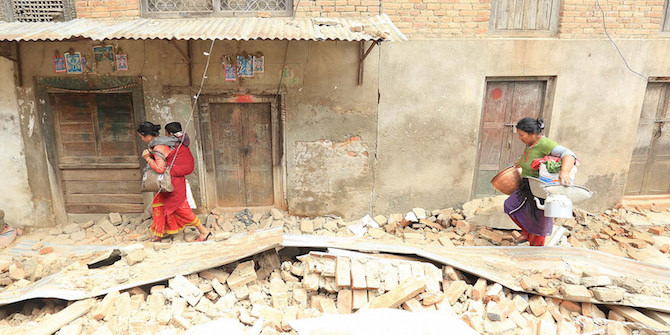LSE’s Professor Lord Nicholas Stern and and Kirit Parikh argue that industrialised countries should stop lecturing India and instead recognise – and learn from – what the country is doing for climate change. This article first appeared in the Indian Express.
There is no shortage of people telling India what to do on low-carbon growth, but there is a shortage of understanding of what India is doing. Even the UNDP in its recent Asia Pacific Human Development Report urges emerging economies like India to do more for climate change.
If one appreciates what India’s emissions are compared to others, what India has contributed to the build-up of greenhouse gases (GHGs) in the atmosphere and what it is doing about climate change, one would stop lecturing India.
India’s CO2 emissions in 2008 were 1.3 tonnes per capita. Global average per capita emissions were more than three times, China’s four times, the US’s 14 times and the EU (27)’s six times as much as India’s. Taking into account growth since 2008 and other GHGs, India’s emissions per capita are probably around two tonnes CO2e (CO2 equivalent).
What accumulate in the atmosphere as GHGs are the global emissions in excess of what the global environment absorbs, which is some 15 billion tonnes of CO2e per year in oceans, etc. If this absorptive capacity is allocated to all human beings equally, each person would be “entitled” to emit around two tonnes per year. India’s is only just reaching two tonnes per capita CO2e.
Given this, what India is doing for climate change should be recognised and should inspire and shame some industrialised countries to do more. India’s prime minister announced on June 8, 2007 at Heiligendamm that India is determined to see its per capita emission levels never exceed the average of the per capita carbon emission levels of developed countries. This declaration places a self-imposed restraint and is a voluntary commitment.
But one must also look forward. Annual global emissions are close to 50 billion tonnes CO2e per annum. This must reduce to below 35 billion tonnes in 2030 and below 20 billion tonnes in 2050 if the world is to have a reasonable chance of holding temperature increases to 2°C above the 19th century — the level internationally agreed upon as a sensible upper limit at the UNFCCC conference in Cancùn in December 2010, and above which scientists have rightly warned that global warming be seen as “dangerous”. India’s total emissions are now around 2.5 billion tonnes CO2e and will likely double in the next 10 years towards five billion tonnes. That will still leave India way below per capita emissions in rich countries and below the 12 billion tonnes CO2e that China will be emitting 10 years from now. But India and China together would, in 10 years, be emitting around half the global carbon budget for 2030.
If climate change is to be managed successfully, all countries must embark on a different path now. If they do not, the hostile environment we will create will likely reverse development and destroy the prospects of overcoming poverty. In the language of Rio+20, “economic sustainability, social sustainability and environmental sustainability” are inextricably intertwined.
Recognising the importance of the issue and that India is vulnerable to climate change, in 2008 the Prime Minister’s Council on Climate Change was set up, which formulated India’s National Action Plan on Climate Change.
In December 2009 India made another announcement, at the Copenhagen Conference of the Parties signatory to the UNFCCC adopted at the Earth Summit in 1992 at Rio, stating that it will aim to reduce the emissions intensity of its GDP by 20-25 per cent by 2020 in comparison with 2005. After this, the Planning Commission set up an expert group in February 2010 to sketch out a low-carbon strategy for inclusive growth. The expert group in its interim report has identified specific actions and measures that can reduceIndia’s emissions intensity by nearly 25 per cent by 2020. It has also shown that, with a more aggressive effort and international support of finance and technology, it is feasible to reduce emissions intensity by almost 35 per cent by 2020 even when the economy grows at 8 to 9 per cent annually.
India has already taken a number of measures. These include a tax of Rs 50 per tonne of coal, the proceeds earmarked to promote renewable energy; various incentives for the promotion of wind power and solar energy; the Green India Mission, which focuses on expanding the forest and tree cover in the country by 10 million hectares over the next decade; the Energy Efficiency Mission, which aims to save about 23 million tonnes of oil-equivalent of fossil fuel every year by 2014-15, along with an expected avoided electricity capacity addition of around 19,000 MW; encouragement of energy-efficient buildings; development of dedicated freight train corridors to shift the movement of goods from trucks to trains; and development of public transport systems in cities.
However, by itself, India cannot reduce the threat of climate change. Global action is needed. Such actions must be on the scale required and must recognise that historical and current emissions, together with wealth and technology, require different responsibilities. These requirements, including equity, have been embodied in the principle of “common but differentiated responsibility” of the UNFCCC, which placed developed countries in Annex 1 with “binding” commitments in the Kyoto Protocol and developing countries with “voluntary” agreements. However, the distinction between Annex 1 countries should be revisited. As non-Annex 1 countries develop, they need to take some responsibility.
The basic arithmetic of climate change “budgets” comes from the science and has to be recognised. Even though the past accumulation of GHGsb is highly inequitable and the risks are highly inequitable too, with poor countries and peoples being hit earliest and hardest, the risks can be managed only if all are involved in reducing emissions. This approach was recognised in the “Durban Platform” agreed at the UNFCCC meeting in December 2011 in its emphasis on a shared commitment “with legal force”, and the eventual elimination of the Annex 1/non-Annex 1 distinction. But the world must now work to make these Durban understandings more explicit, including the basic budget arithmetic: even if developed countries emitted zero from 2030 onwards, developing countries on average would have to hold emissions below five tonnes per capita CO2e in 2030 and 2.5 tonnes in 2050.
The two defining challenges of our century are overcoming poverty and managing climate change. We must recognise that if we fail on one, we fail on the other: the idea of “equitable access to sustainable development”, which was proposed by India and adopted in Cancùn, embodies this recognition. Thus the problem of equity and poverty reduction becomes one of everyone embarking on a transition to low-carbon development, with rich countries providing strong support for developing countries with financing and technology.
India has indicated in its low-carbon strategy how much more rapidly it could move if that kind of assistance were to be forthcoming. But it is time for rich countries to accelerate their own efforts to cut emissions, take equity more seriously and step up their climate support for development and poverty reduction, and do less lecturing and enhance their understanding and recognition of what developing countries, including India, are actually doing.
Professor Lord Stern is Chairman of the LSE Grantham Research Institute on Climate Change and the Environment and the Asia Research Centre. Parikh is Chairman of the Expert Group on Low-Carbon Strategy for Inclusive Growth, Indian Planning Commission.







